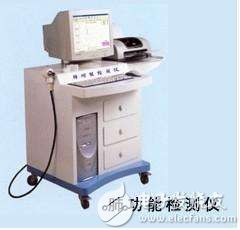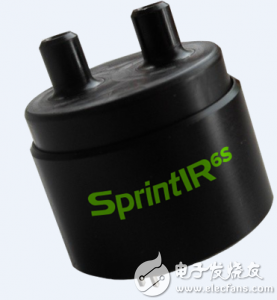Application of gas sensor on lung function tester

one. Clinical significance of pulmonary function test Pulmonary function test is an important examination content of clinical chest and lung disease and respiratory physiology. For early detection of lung and airway diseases, identify the cause of dyspnea, diagnose the lesion, and assess the severity of the disease. The prognosis, assessment of the efficacy of drugs or other treatments, assessment of lung function tolerance to surgery or labor intensity tolerance and monitoring of critically ill patients, lung function tests are essential. The results were judged to refer to the normal lung function values ​​of the same population.
Pulmonary function tests usually include ventilation function, ventilation function, respiratory regulation function and pulmonary circulation function. The examination items are numerous, and the most commonly used in clinical practice is ventilation function examination, which can diagnose most chest diseases, such as diffusion function measurement. Closed gas volume measurement, airway resistance measurement, diaphragmatic muscle function test, exercise cardiopulmonary function test, airway reactivity test, etc. can be supplemented to different degrees of ventilation function test.
two. The components of the pulmonary function test are mainly composed of a spirometer, a gas analyzer and a pressure gauge. Through their combination, most indicators of lung function, such as lung volume, ventilation, diffusion, and respiratory muscle strength. The oxygen consumption, the amount of carbon dioxide produced, etc. are measured, and the spirometer is most commonly used in lung function tests. Understand the structure and working principle of the pulmonary function meter, and have a corresponding understanding of the technical failure of the pulmonary function meter, and make an accurate judgment on the false aberration of the examination, so that the evaluation of the patient's lung function is more accurate. Therefore, this is especially necessary for an excellent lung function tester.
III. Gas Analyzers Gas analyzers are primarily used to determine gas composition (qualitative) and gas concentration or pressure (quantitative). There are two common methods for collecting exhaled gas in a gas collection bag (Douglars' bag) and then performing balanced gas analysis and breath by breath. Due to the increasing accuracy of analytical instruments and the speed of analytical response, real-time analysis is currently more common. The gas analyzer can be used for lung function measurement such as lung dispersal function, exercise cardiopulmonary function, cardiac output, oxygen consumption, and carbon dioxide production.
Commonly used gas analyzers, according to the working principle of the core component - gas sensor, can be divided into the following types:
1. Principle of fluorescence quenching oxygen

LOX-02
The fluorescence oxygen sensor absorbs the oxygen molecule quenching principle based on fluorescence, and oxygen absorbs the spectrum of the blue portion of the light. Oxygen causes the quenching effect of the fluorescence excited by the special bismuth compound, so that the intensity of the emitted light changes, and the change in fluorescence intensity is related to the oxygen concentration. The optical oxygen principle does not affect the measured ambient gas for each test. Oxygen is not consumed during the test, which is quite different from traditional oxygen Sensors, which consume oxygen and change the proportion of the gas to be measured. The intensity change time can be calibrated to obtain an accurate oxygen partial pressure value that is unaffected by changes in air pressure. When calibrating the oxygen concentration to obtain accurate oxygen measurements, the sensor is completely inert and does not consume any oxygen to be measured. At the same time, the sensor has a built-in air pressure chip, and the built-in software has calculated the oxygen concentration. When using, you only need to send the command to read the oxygen partial pressure value, atmospheric pressure value and oxygen concentration value.
2, non-dispersive infrared principle

SprintIR6s
The gas is used to detect the absorption principle of infrared rays. Commonly used is the CO2 sensor. The method is accurate and responsive. When the gas flow rate is >0.2L/min, the CO2 concentration response value T90 can reach 1s. Therefore, it is especially suitable for the lung function tester to measure the CO2 concentration in real time. 
Jinan Guohua Green Power Equipment Co.,Ltd. , https://www.guohuagenerator.com
